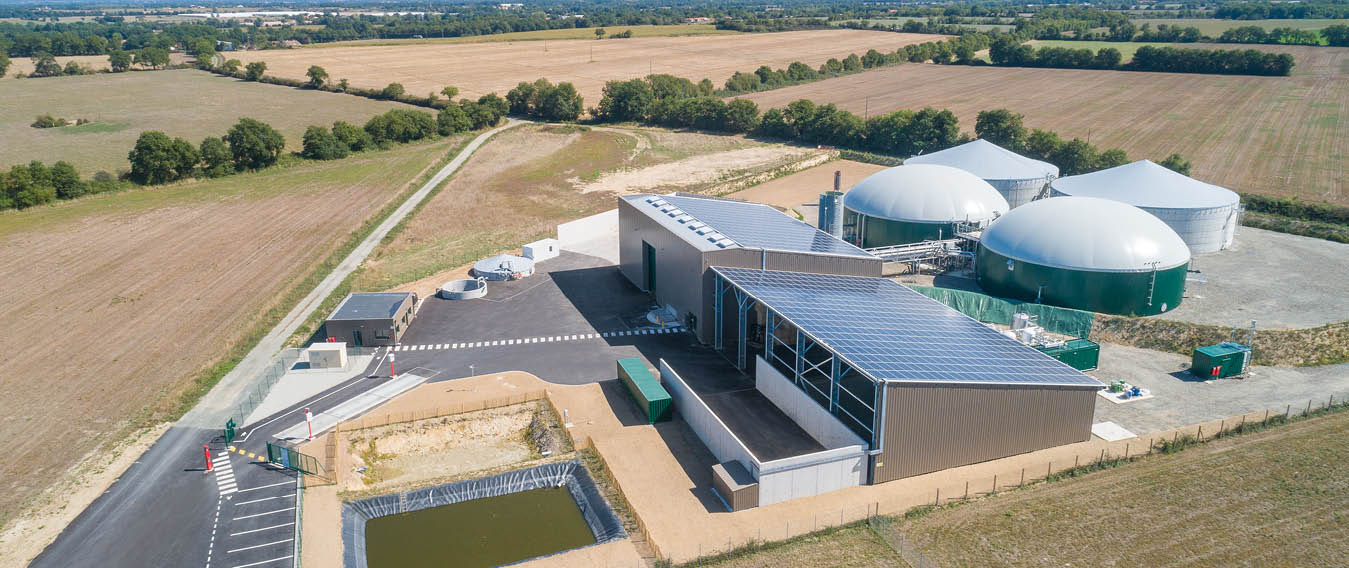ENGIE's solution: circular economy and energy autonomy
To meet the challenges associated with the transition to carbon neutrality for territories, ENGIE is developing local renewable gas production units. The biomethane plant in Montaigu, in the Vendée region of western France, has been up and running since 2019. It processes 30,000 t/year of organic matter from 20 partner farms in the project, agrifoods-food production sites and local authorities.
By methanizing these substrates, the biogas plant is able to inject 2.2 million cubic metres of biomethane into the gas distribution network every year, equivalent to the annual consumption of 1,800 gas-heated households.
The benefits for the community are numerous. The digestate produced (residues from the methanization of organic waste) is recovered and spread on farmland, replacing chemical and fossil-derived fertilisers. The installation of pipelines transporting the manure and part of the digestate limits greenhouse gas emissions related to transport. And to improve the energy efficiency of the biomethane unit, a photovoltaic plant has been installed on its buildings. The electricity produced is therefore directly self-consumed, accounting for 20% of the site's power needs.
This global project helps develop renewable energies, drawing on the local circular economy. Supported by Ademe (the French Environment and Energy Management Agency) and the Pays de la Loire water authority, it is one of 80 projects being developed by ENGIE with the aim of producing a volume of 5 TWh/year of biomethane by 2030.
“This new facility in Terres de Montaigu, involving local farmers, is a fine example of technological innovation for the benefit of environmental protection and the energy transition.”
Antoine Chéreau, President of Terres de Montaigu, Mayor of Montaigu – Vendée
- 2.2 million m3 of biomethane (i.e., 22 GWh/year) are injected into the network each year, equivalent to the gas consumption of 1,800 households.
- 250 Nm3/h continuously injected into the gas distribution network.
- 5,000 tonnes of CO2 avoided per year, i.e., the equivalent of the annual emissions of around 2,500 new cars.

